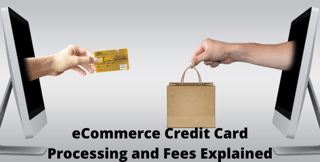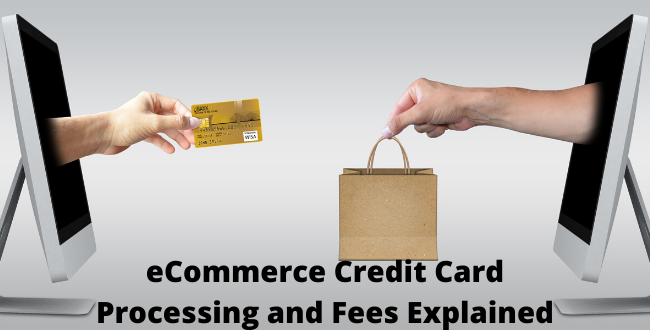

I know what you’re thinking. “Man, my life just wouldn’t be complete if I didn’t know everything about credit card processing. It’s the kind of thing that gets people out of bed in the morning and gives them a reason to live."
Okay, maybe not.
In all seriousness, while credit card processing isn’t the most enthralling of topics, it is critical to have an understanding of how this works if you’re running an eCommerce store. The fees associated with credit card processing can have a big impact on your business’ bottom line and your eCommerce ecosystem. In some cases, you can improve the fees you pay and reduce that bottom line impact.
We’ve broken down credit card processing into ten easy-ish steps to follow. With this understanding you’ll have the knowledge of the key fees that play a role in this process chain and be armed with enough information to question your current state of affairs. Your Merchant Service Provider can assist you further and help find opportunities to reduce your fees, if possible.
- Step 1: A customer initiates a purchase by interacting with one of three pieces of technology: POS System, Payment Gateway, or Virtual Terminal.
- POS (Point of Sale) – these are the devices that allow you to physically insert a credit card chip or swipe a card to collect payment information
- Payment Gateway – the piece of technology that allows customer credit card information to be captured and transmitted from an online eCommerce store
- Virtual Terminal – a piece of technology, commonly sold with a payment gateway, that allows an internal employee to input a customer’s credit card information manually (example: info taken over the phone) and then have it transmitted through the Credit Card Network
- Step 2: The Merchant Acquirer/Merchant Service Provider facilitates the communication between the merchant’s POS/Gateway/Virtual Terminal and the Payment Processor.
- Although sometimes referred to as the Payment Processor, Merchant Service Providers are institutions that offer a variety of processing support options for Merchants, including:
- ACH Payment Processing
- Virtual Terminal Processing
- Mobile Processing
- Online Reporting
- Although sometimes referred to as the Payment Processor, Merchant Service Providers are institutions that offer a variety of processing support options for Merchants, including:
- Step 3: The Payment Processor pushes the payment request through the Credit Card Network to the Issuing Bank.
- Payment Processors are the infrastructure technology that directly interface with Credit Card Associations (Visa, Mastercard, Amex, etc.). They receive payment requests from payment technology and send the requests to the card association network. Here is a list of main credit card processor technologies:
- First Data
- Vantiv
- WorldPay
- TSYS
- Chase Paymentech
- Heartland
- Global
- Elavon
- Payment Processors are the infrastructure technology that directly interface with Credit Card Associations (Visa, Mastercard, Amex, etc.). They receive payment requests from payment technology and send the requests to the card association network. Here is a list of main credit card processor technologies:
- Step 4: The Issuing Bank verifies that the funds required are available and either authorizes or declines the transaction. If the purchase is authorized, an authorization code or token is sent back to the POS/Gateway/Virtual terminal approving the transaction.
- The Issuing Bank is the customer's bank, where the customer was issued their debit or credit card and where their money is stored.
- Step 5: The funds are withdrawn from the customer’s account (at the Issuing Bank) and begin being routed back to the merchant’s Acquiring Bank.
- The merchant’s Acquiring Bank is where the merchant’s Merchant Account resides. It’s the bank account where funds from transactions are deposited. Merchant Accounts receive these deposits in the form of a batch transaction usually at the end of each day. Batch transactions lump sum amount of revenue captured during a day, less applied Discount Rates.
- Step 6: As funds are routed from the Issuing Bank through Credit Cart Network to the Acquiring Bank the Discount Rate begins to be applied.
- This Discount Rate is the combination of several fees subtracted from the original value of the transaction, for example:
- An original transaction value of $100, with a Discount Rate of 1.5%, $1.50 is subtracted from the $100. The Acquiring Bank, where the Merchant Account resides, will ultimately receive $98.50 after the funds are routed through all parties involved in the exchange.
- Step 7: As funds move from the Issuing Bank to the Credit Card Network, the Issuing Bank charges an Interchange Fee (one of the fees included in the overall Discount Rate).
- The Issuing Bank charges this Interchange Fee for bearing the burden of underwriting the funds required to authorize the transaction. Interchange fees are set by the Credit Card Associations (Visa, Mastercard, etc.) based on the card type used in the transaction and the risk associated to the various cart types.
- Using the above example: assume the Interchange Fee per transaction is 1%. Of the total Discount Rate charged ($1.50) the Issuing Bank will keep $1.00 for the Interchange Fee.
- If you serve customers that commonly use Business or Corporate credit cards to pay for transactions (wholesale operations), you can actually reduce this Interchange Fee by providing more information from your transactions to the Processors. This is called Level 2 and 3 processing. It’s a function of both your shopping cart platform and the Payment Gateway you use. Your Merchant Service Provider should be able to assist you in evaluating this as a potential option for you.
- Step 8: As funds move then from the Credit Card Network to the Acquiring Bank, the Credit Card Association (for example: Visa) charges the Processing Fee.
- The Processing Fee is a fee charged for the use of the infrastructure (the Credit Card Network) built by the Credit Card Associations enabling this entire process and the ability for merchants to accept credit cards.
- Continuing with the previous example: of the total Discount Rate of $1.50, 20 cents is charged for the Processing Fee.
- Step 9: When the funds arrive at the Acquiring Bank, the Acquirer Fee is charged.
- The Acquirer Fee is the last of the fees charged from the overall Discount Rate. It is the fee charged by the Acquiring Bank for providing a Merchant Account to the merchant.
- Rounding out the example: after the $100 is withdrawn from the customer’s account at the Inquiring Bank, less $1.00 for the Interchange Fee, and less 20 cents for the Processing Fee, 30 cents is then captured by the Acquiring Bank via this Acquirer Fee.
- Step 10: Total transaction revenue for the day, less all fees, are batched and deposited in the merchant’s Merchant Account, completing this process.
- Finishing off the working example, the merchant would receive $98.50 in payment.
See that wasn’t so bad! If your head is still spinning trying to grasp this, reach out to us and let us help you sort through it. These fees amount to thousand or hundreds of thousands of dollars each year that come out of a business’ bottom line. Understanding all of this is critical to maximize the revenue your business captures after this process takes place.
Fun fact, did you know that you can lower your Interchange Fees? To do so you have to secure Level 2 and 3 order data and provide it to the Credit Card Associations during this process. This is mainly applicable to B2B companies that commonly deal with business or corporate credit cards. If you do secure Level 2 and 3 information (the criteria varies by Credit Card Association), it’s a great way to capture more revenue from your transactions by paying lower fees. You can recoup thousands of dollars for your business’ bottom line. If you want to learn more, give us a call today!
